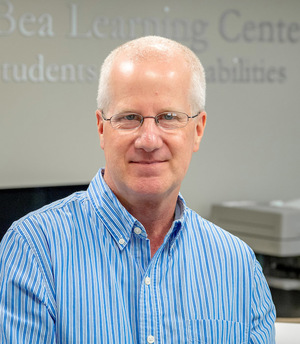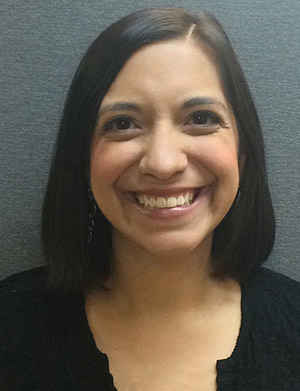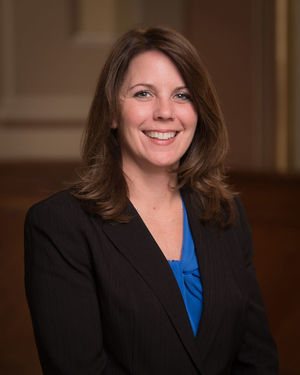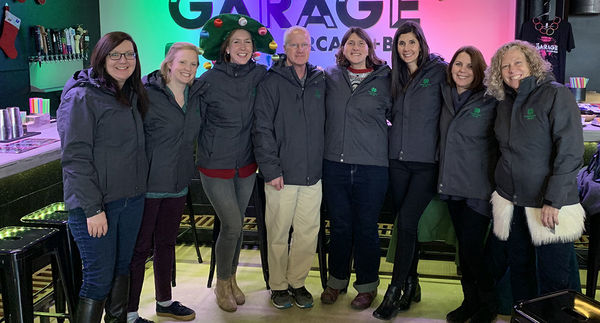
Last semester, the Center for Student Support and Care opened in temporary quarters in Flanner Hall, bringing under one umbrella the existing Sara Bea Center for Student Accessibility Services and the University’s care and wellness consultants.
It was a pragmatic move, says Scott Howland, Sara Bea’s program director. “We often have students in common. Our daily interaction allows us to establish a greater network of care for students.”
As the Student Affairs website touts, the center is dedicated to serve as “a bridge between students with complex needs and the wider University, connecting them to campus resources and accommodations."
If the center bridges a gap, the gap became a chasm during spring break when students learned all classes would move online. As part of the University’s coronavirus response, students would not be returning to campus to finish the semester.
It was a major disruption for any student, but for the population the center serves, it was even more so. Fortunately, the center was in place, as was an able staff.

Maria Candelaria Flukas began her position as a care and wellness consultant just before spring break. With a servant’s heart and no complaints, she shares, “I have had the privilege to work with students who have been personally impacted by COVID-19 whether through their own diagnosis, or the diagnosis of a parent, family member or close friend.
“These students have had to face [huge] challenges in caring for their physical health, the mental health implications that come from the diagnosis and their continued drive to succeed academically this semester. Our integrated work with Sara Bea has allowed students to receive necessary accommodations, despite these challenges.”
One semester to establish an identity
Margaret Morgan, the center’s director, is grateful that most of the team had a few months together before heading into the crisis.
We spent the fall semester looking through everything we do and considering, what’s our identity? What are our current services? What new populations can we focus on? What new offerings can we make?” recalls Morgan.
While maintaining student services and programming, the teams gained a better understanding of the internal running of each area and laid the foundation for the newly combined unit.
Administrative assistant Cyndi Troyer notes they also used the time to promote the center and its holistic approach to meet student needs. It worked. Since spring break, there has been no shortage of referrals.

“We have seen the benefits of our promotion efforts through the number of requests we have continued to receive even though we are currently providing services virtually and working remotely,” Troyer says.
A nimble staff responds to the crisis
“Our entire world has changed in the past two months,” says Morgan. In what she calls “the great transition,” center staff pivoted to provide, in new formats, vital and important services to students.
For example, there are 1,000 students registered for accommodations through Sara Bea. “So, we worked with all 1,000 of them to make sure their accommodations adjusted into the new online settings,” Morgan says.
Note-taking is an accommodation offered to students who have documentation of a diagnosed medical condition that complicates learning. "Under normal circumstances, we hire about 400 note-takers for students. So if a student, for a variety of reasons, needs assistance taking notes in a class, the easy thing to do in the past was to just send a note to all the students in the class and see if someone would mind taking their notes and sharing them. We would pay the students. It was a very easy process.”
But with students away from campus, hiring them became difficult. So Morgan’s team created a volunteer list of staff members across the University who had the capacity to help. For the past several weeks, the volunteers have attended Zoom classes with students, reviewed class PowerPoint slides and prepared notes for those who need the accommodation.
Students are hurting and receptive to assistance

Providing a continuum of care for students with mental health needs has been another hurdle. The care and wellness consultants went student by student to determine how to connect them to resources either on campus (virtually) or where they are.
“Our students are lonely right now. They’re craving connection. Those who had mental health needs before are really struggling, and many who didn’t when they were on campus are having difficulties now,” says Morgan.
She explains that a large part of the center’s work is to ensure students have access to services they need. For example, care and wellness consultants work closely with the University Counseling Center to arrange tele-health services when possible. In other cases, the consultants connect students to support resources in their local communities. As these connections are being made, care and wellness consultants meet with students more frequently to offer additional support.
“Students have been really receptive and open to this help, and we’ve worked hard to provide this crucial care to students during such an uncertain time,” she says.
As they always are, faculty are a primary touchpoint, Morgan notes. “We’re getting even more requests from faculty members to reach out and check on students.
Preparing for next fall

Ariell Watson, Beth Ferlic, Scott Howland, Margaret Morgan, Stella Miller, Cyndi Troyer and
Annie Eaton. Not pictured are Maria Candelaria Flukas and Laura Hoover.
In the coming year, once campus construction projects are able to resume, the Center for Student Support and Care will move into its permanent space in the Coleman-Morse Center. Morgan and her team already planned to expand services, like increasing resources for students on the autism spectrum with peer mentoring, for example.
“We’re also looking at collaborating with other health and wellness partners as well as the academy to add support for other populations. What would it look like to create coaching systems for our students, whether it’s academic coaching, wellness coaching or life skills coaching, like how to study or manage time? Students are looking for extra support.”
Now the team anticipates an increased demand for services related to the pandemic.
“We have to think through what the new normal looks like on our campus. Who knows what will have happened in the students’ lives. By then, we will have students who will have lost family members, or been impacted by the financial piece of this. How do we prepare to have those conversations with students?
It’s something the campus community as a whole must consider.
Originally published by at ndworks.nd.edu on May 11, 2020.